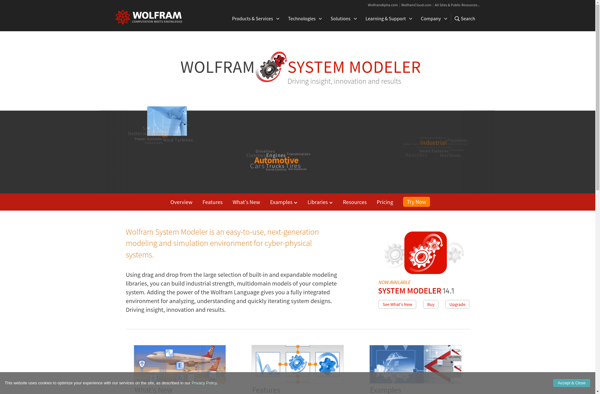VisSim

VisSim: Visual Block Diagram Language
A visual block diagram language for simulating dynamic systems and modeling physical processes, enabling fast creation and iteration of models using a drag-and-drop interface.
What is VisSim?
VisSim is a visual block diagram software used for simulating dynamic systems and modeling physical processes. It provides a graphical programming environment for creating models by connecting functional blocks, with no need for text-based coding.
Some key features of VisSim include:
- Drag-and-drop interface for quickly building models by connecting block diagrams
- Extensive library of predefined blocks for math, signal processing, control systems, etc.
- Simulation engine for running models in real-time or faster than real-time
- Custom block creation for adding new functionalities
- Import/export capabilities to integrate with MATLAB, C, Python, and more
- Code generation for deploying models as standalone applications
- Data visualization tools for charts, graphs, and dashboards
- Models can be parameterized and controlled interactively during simulation
VisSim is used across many industries including automotive, aerospace, defense, consumer electronics, industrial automation, and others. It enables faster iteration and testing of designs compared to low-level coding approaches. Models can be prototyped and simulated visually before generating code for embedded systems or HIL testing.
VisSim Features
Features
- Drag-and-drop interface for building models visually
- Large library of built-in blocks for math, signal processing, control systems, etc
- Simulation engine for running models in real-time or faster than real-time
- Automated code generation for creating executable code from models
- Import/export capabilities to interface with MATLAB, Simulink, C/C++, Excel, etc
- Customizable block creation for building new blocks
- Data visualization tools for plots, scopes, histograms, etc
- Linearization tools for analyzing models around operating points
Pricing
- One-time Purchase
- Subscription-Based
Pros
Cons
Official Links
Reviews & Ratings
Login to ReviewThe Best VisSim Alternatives
Top Development and Modeling & Simulation and other similar apps like VisSim
Here are some alternatives to VisSim:
Suggest an alternative ❐Mathematica

MATLAB

Scilab

GNU Octave

Maxima

Yakindu Statechart Tools

Ascend

SageMath

WxMaxima

OpenModelica

Xcos

EMSO simulator

GAMS

Wolfram SystemModeler

Caedium
